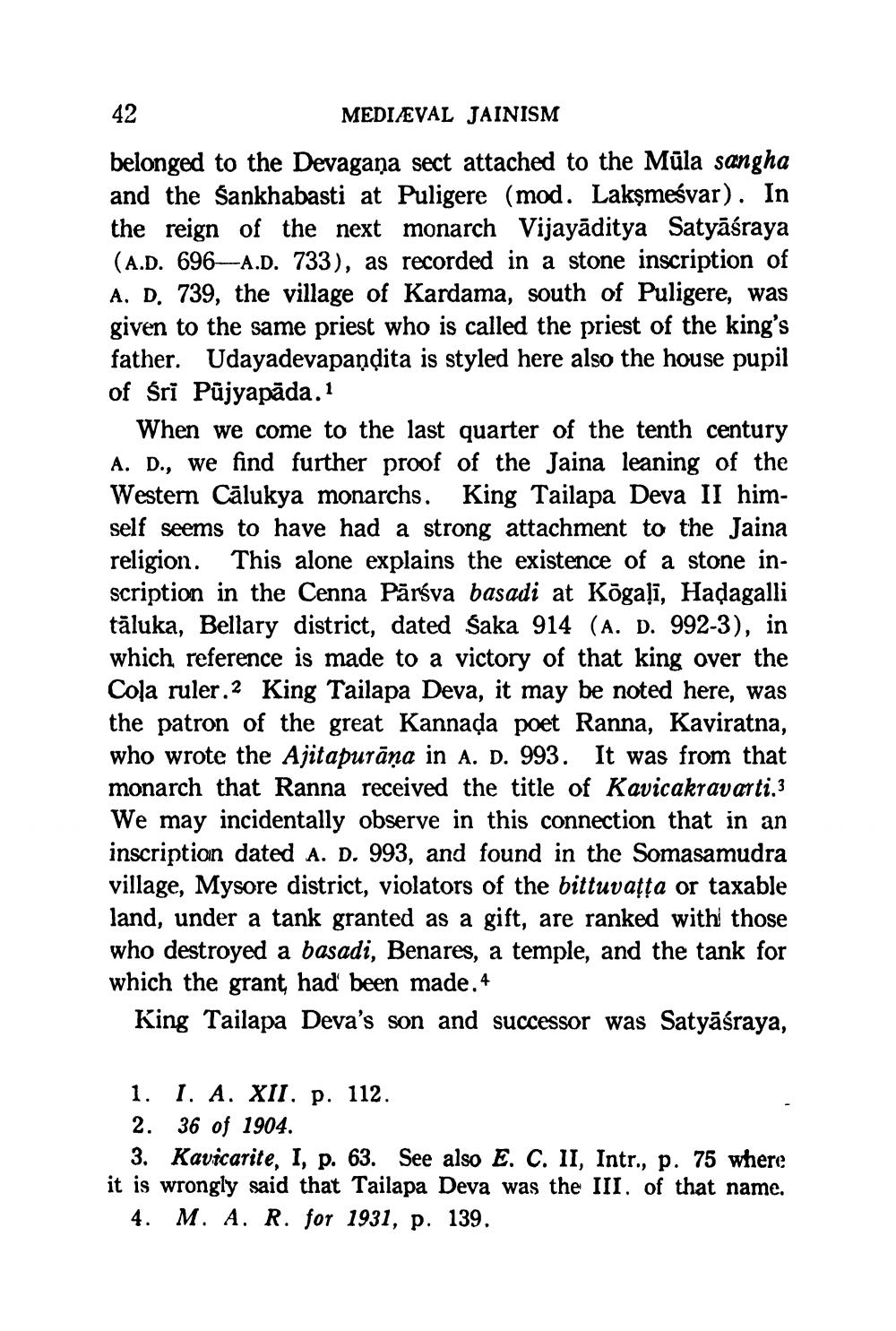________________
42
MEDIEVAL JAINISM belonged to the Devagaņa sect attached to the Mūla sangha and the Sankhabasti at Puligere (mod. Lakşmeśvar). In the reign of the next monarch Vijayāditya Satyāśraya (A.D. 696-A.D. 733), as recorded in a stone inscription of A, D. 739, the village of Kardama, south of Puligere, was given to the same priest who is called the priest of the king's father. Udayadevapandita is styled here also the house pupil of śri Pūjyapāda.1
When we come to the last quarter of the tenth century A. D., we find further proof of the Jaina leaning of the Western Cālukya monarchs. King Tailapa Deva II himself seems to have had a strong attachment to the Jaina religion. This alone explains the existence of a stone inscription in the Cenna Pārsva basadi at Kögalī, Hadagalli täluka, Bellary district, dated Saka 914 (A. D. 992-3), in which reference is made to a victory of that king over the Cola ruler.2 King Tailapa Deva, it may be noted here, was the patron of the great Kannada poet Ranna, Kaviratna, who wrote the Ajitapurāņa in A. D. 993. It was from that monarch that Ranna received the title of Kavicakravarti.3 We may incidentally observe in this connection that in an inscription dated A. D. 993, and found in the Somasamudra village, Mysore district, violators of the bittuvațța or taxable land, under a tank granted as a gift, are ranked withi those who destroyed a basadi, Benares, a temple, and the tank for which the grant had been made. 4
King Tailapa Deva's son and successor was Satyāśraya,
1. 1. A. XII. p. 112. 2. 36 of 1904.
3. Kavicarite, I, p. 63. See also E. C. II, Intr., p. 75 where it is wrongly said that Tailapa Deva was the III. of that name.
4. M. A. R. for 1931, p. 139.




